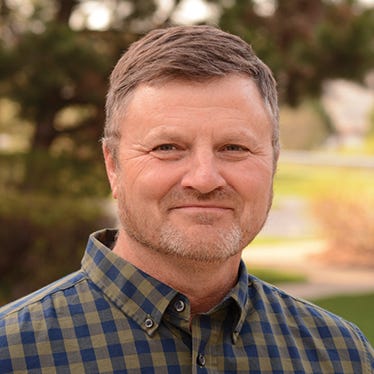
We talk a lot these days about telling the story of agriculture, especially to youth. Seven dairy farmers, including Jodi Cast of JJC Jerseys in Beaver Crossing, Neb., helped to bring dairy farming to the classroom through Discover Dairy’s “Adopt-A-Cow” program.
Spanning Midwest Dairy’s 10-state region, the Adopt-A-Cow program reached 3,500 classrooms and 74,000 students last year. Cast alone reached 269 classrooms and 6,200 students in Nebraska, South Dakota and North Dakota in 2021.
Cast, her husband, Jason, and their family are the third generation on their dairy farm, with their children hoping to be the fourth generation. They milk 230 cows, which are mostly Jersey with a few other breeds. They don’t farm crop ground, but they focus on dairying, including raising all of their own replacement heifers.
Classroom connection
Working through Midwest Dairy, Cast was asked to participate in the innovative Adopt-A-Cow program.
“I hadn’t heard of the program before,” Cast says. “The pandemic year of 2020 was our first year of participating, but since then, the program has dramatically increased, and the numbers are pretty significant.”
Throughout the year, Cast takes photos and some videos around their farm of the adopted calves. Classrooms that are participating in the program can send photos and letters to the farmers. Then, at the end of the school year, participating dairy farmers such as Cast do a live chat with classrooms.
“The program starts in September with calves that are born in September, and then we go throughout the school year,” Cast explains. “Although we’ve only met through photos and descriptions of the ‘adopted’ calf on our farm, I was impressed by how much the kids get attached to the calf.”
She says they talk about the animal’s ration, how much and how often they eat, housing, bedding, vaccination programs, and what farmers do to help animals when they are sick.
“Throughout the nine months, they watch the calf and how it changes,” Cast says. “We chart their growth, height and weight, from birth to 9 months. In the last live chat I did, they didn’t want to ask about dairy products. They just wanted to see ‘their’ calf.”
This isn’t the first time Cast has worked with agriculture literacy. She has participated in other Midwest Dairy events, taken calves to those festivities, and visited with students and parents. Classes have even taken field trips to the dairy to visit the calves in person.
“It is important because students are getting further and further removed from the farm,” Cast says. “They don’t know where their food comes from, and that’s the big reason we have to tell our story. Consumers get a lot of information thrown at them from people, but we need to tell them the way it truly is. We need to get our story out there.”
As for Adopt-A-Cow, Cast says that it has been a fun experience overall. “Even if parents are cynical about agriculture, you can reach them as a child,” she says. “The students can say, ‘That’s not what I saw.’ At least it starts a conversation, and hopefully we are reaching parents, too.”
To help with this program or sign up as a classroom to participate, visit midwestdairy.com.
About the Author(s)
You May Also Like






